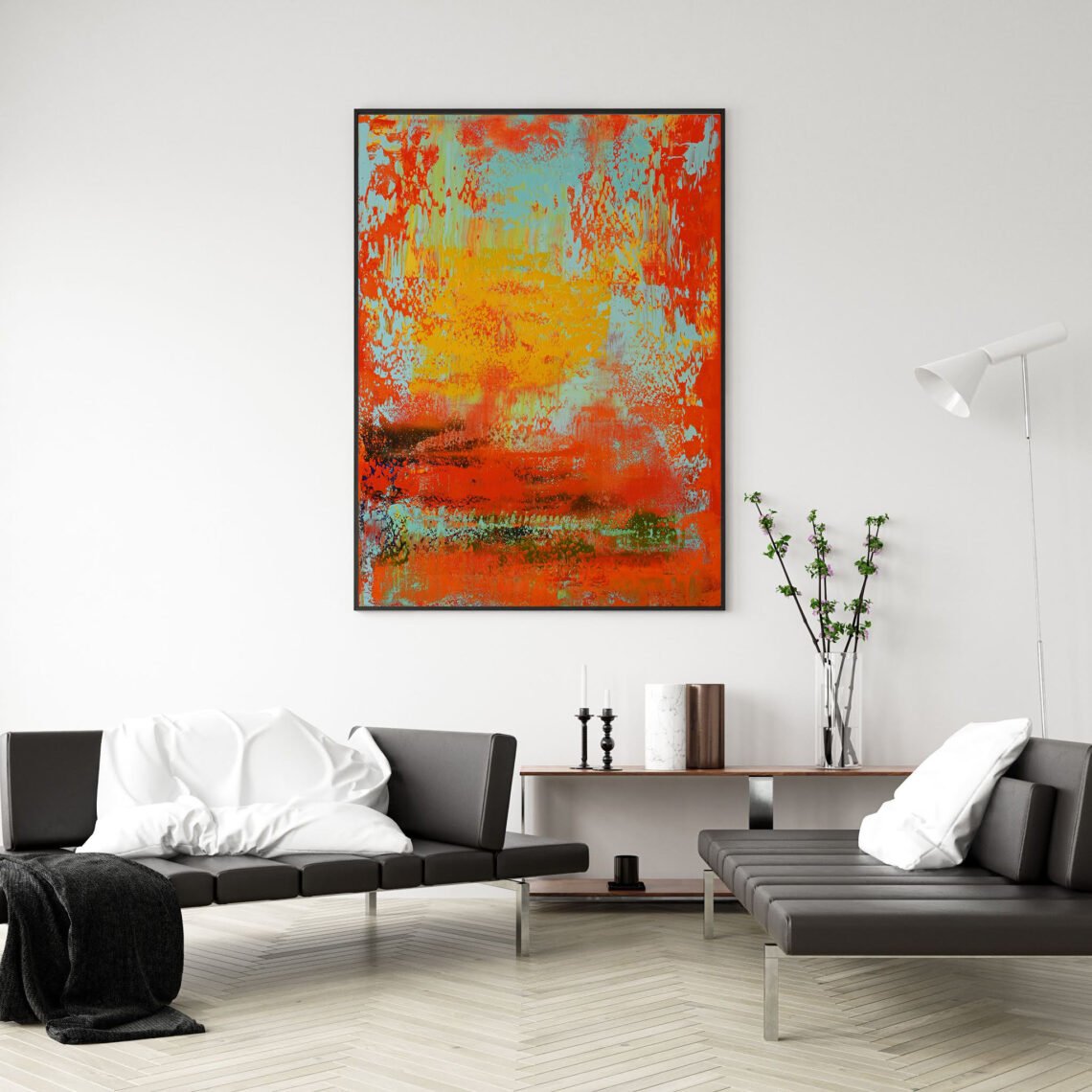Tips to Choose the Right Interior Wall Art
Art is the pretty icing on the cake in any home. It’s a perfect way to add some extra personality and make the space truly true to you. So, it makes sense to take the time to think about the pieces you want to show off. There is no single list of set-in-stone rules for choosing art for a living room, so you have plenty of options at your fingertips.
Getting into style satisfaction is easy with these ideas from Pottery Barn. While you’re at it, there are no set rules for decorating a home, following these basic guidelines will help you select the perfect wall art ideas for your home, in all its uniqueness.
Go by style, size, theme, color, inspiration, or floor plan: the options are limitless. Before getting to the heart of the matter, here is a piece of advice that should accompany you in your quest: Find something you like. It’s so simple!

Art is meant to elicit a (hopefully positive!) reaction, so make sure whatever you choose elicits feelings of excitement, happiness, calm, or joy. Otherwise, do not stick it on the wall.
While it’s usual to compromise when selecting art – perhaps finding the perfect piece proved difficult, or it’s easier to grab the first painting that reflects the colors of the room in question – you shouldn’t settle for that.
Think of your walls as an extension of your tastes and treat the selection process the same way you would choose a sofa, a new dining table or a bed. Wall art has the power to convert a space, so find the piece that does just that in your home.


- Style of Wall Art
If size isn’t your thing, what’s the primary focus behind most interior design decisions: style? Your home is likely to already have an established style and perspective, so when selecting wall art, you’ll want to assess and determine how your new purchase will fit into your space.
Whether modern, coastal chic, traditional, or simplistic Scandi, the wall art you select can cement and perfect the style of your home, so choose wisely! From abstract prints to relaxing nature photography or minimalist neutral paintings, there’s something for everyone if you know where (and how) to look.
Here are some of our top tips for matching your style and wall art choices. Consider the feeling your home evokes (or perhaps, the feeling you want to evoke) and find the art that reflects it. Do you want to feel like you’re on the beach when you’re really in the middle of a busy and stressful city?
Your design choices are likely to help you feel relaxed rather than energized. Reflecting this in your art ties everything together.
Furthermore, let style play into the kind of artwork you choose. Modern homes can benefit from black and white picture pieces, while a coastal cottage might be more suited to a textured canvas paint job in beach tones.


2. Theme of Interior Wall Art
We have all heard of interior wall art styles and have probably chosen the one that best suits our home. But these also play a part in virtually every interior decision you make, including the selection of your wall art, because they establish a distinct theme.
The theme of your home determines which pieces fit and which stick out like a sore thumb, so this is perhaps the most important consideration to make when buying a new piece. Get and select your new artwork based on your home or room theme, and you just can’t go wrong.
Each style has its own influences and manifests itself in different pieces of furniture and household items, so chances are that when you think about the style of your home, you’ll probably remember some artistic choices that are indicative of it. For example, a coastal and beach home is not suited for contemporary, bright, artwork, but rather prefers neutral, whitewashed, or light, elements with pops of cool hues like blues and greens.


While you don’t have to go over the nose like driftwood and seashell pictures, your wall art should reflect the look you’ve established as part of the coastal theme. You can go for creams, whites, and beiges with lots of textures, beach shots and white canvas frames with a sanded back.
On the other hand, none of this would fly in a mid-century modern home, would it? With bolder colors, dark wood, and distinctive shapes, mid-century modern homes evoke a completely different feeling and, therefore, should be treated differently throughout the art selection process. Opt for pops of red, vintage posters, green and blue, and playful geometries to tie the room together in the most appropriate way.
3. Color of Wall Art
Another common tactic used to select wall art is to find pieces that match your home’s existing color schemes. While we’re not saying that lovers of minimalist, neutral design should reflect those exact vibes in every piece of art they buy, it’s a good starting point to find something you love that will work just fine.
There are two main approaches to selecting wall decor based on color, the first is the use of accent shades. Select one or two colors that are already in the room and let them guide the art you go with. This creates consistency and, in turn, a sophisticated, cohesive, and contemporary result.
Play with the shades and tones of these colors to add depth without straying too far from the existing color palette. For example, if your home is mostly neutral with darker terracotta colors, focus on that and play with it in its different guises: light, dark, etc.


4. Make thoughtful framing selections
Is it better to frame or not? That entirely depends on the kind of art you have in your living room. Certain artworks, such as canvases, look fantastic without a frame, while sculptures don’t require one. Investing in a frame for a print or an original piece of art on paper helps to draw attention to it by setting it apart from the wall behind.


5. Choose the size that you want the artwork to be
The entire atmosphere of your living space can be greatly influenced by the size of the artwork. Is the piece of art you’ve your eye on the appropriate size for your room? The benefit of wall art is that you may rearrange and rearrange it as often as you’d like to customize the area to your liking.
Using paper or masking tape, mark the size of the artwork on your wall. You will then be able to gauge its size if you stand back or even if you leave it on your wall for a few days. When two sizes seem equally appropriate, mark out the first and snap a picture of it. Then, mark out the second and snap a picture of it. You can then compare the two images on your phone to choose which size looks best.
With more and more homeowners buying or designing open spaces, choosing wall art is more difficult than ever. The rule of thumb for anyone working with open space is buy and hang your artwork with the intention of clearly defining your space. After all, one of the dangers of an open floor plan (for all their open, airy, and wonderful benefits!) is that there is very little distinction within the rooms, which creates a challenge both functional and stylistic.
You’ll want to keep your artwork consistent throughout, so go into the buying process with a theme or color scheme in mind. Too much differentiation will create a clash between different corners of the home and will do nothing to give your home that cohesive, clean look that we all crave. Be sure to consider the space and use it to your advantage – canvas walls are definitely a great option here, as they concentrate art in one place without overwhelming valuable wall space.






